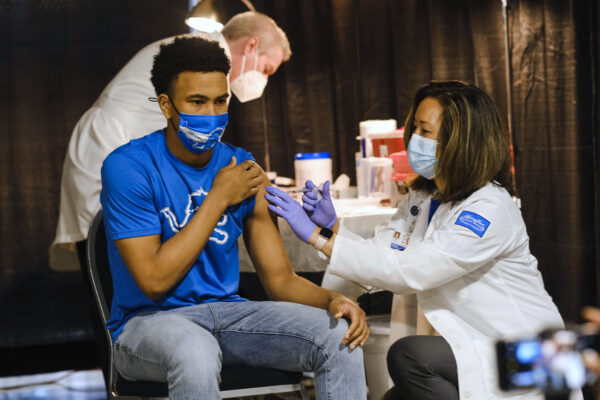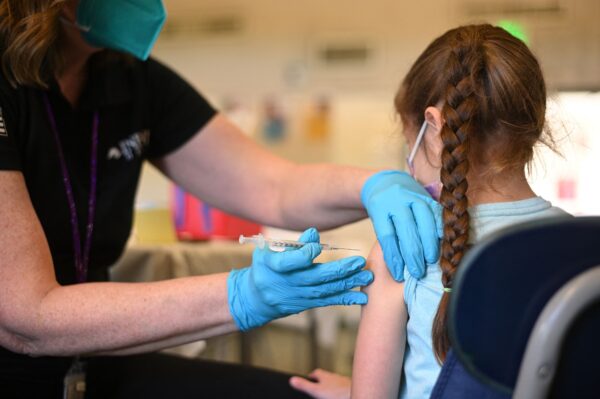Counties with the highest rates of vaccination against COVID-19 are currently experiencing more cases than those with the lowest vaccination rates, according to data collected by the Centers for Disease Control and Prevention (CDC).
The 500 counties where 62–95 percent of the population has been vaccinated detected more than 75 cases per 100,000 residents on average in the past week. The 500 counties where 11–40 percent of the population has been vaccinated detected about 58 cases per 100,000 residents on average in the past week.
The data is skewed by the fact that the CDC suppresses figures for counties with very low numbers of detected cases (1–9) for privacy purposes. The Epoch Times calculated the average case rates by assuming the counties with the suppressed numbers had 5 cases each on average.
The least vaccinated counties tended to be much smaller, averaging less than 20,000 in population. The most vaccinated counties had an average population of over 330,000. More populous counties, however, weren’t more likely to have higher case rates.

 A group of teenagers receive a dose of the Pfizer Covid vaccine in Detroit on April 6, 2021. (Matthew Hatcher/Getty Images)
A group of teenagers receive a dose of the Pfizer Covid vaccine in Detroit on April 6, 2021. (Matthew Hatcher/Getty Images)Even when comparing counties of similar size, the most vaccinated ones tended to have higher case rates than those least vaccinated.
Among counties with populations of 1 million or more, the 10 most vaccinated had a case rate over 27 percent higher than the 10 least vaccinated.
In counties with populations of 500,000–1 million, the 10 most vaccinated had a case rate almost 19 percent higher than the 10 least vaccinated.
In counties with populations of 200,000–500,000, the 10 most vaccinated had case rates around 55 percent higher than the 10 least vaccinated.
The difference was over 200 percent for counties with populations of 100,000–200,000.
For counties with smaller populations, the comparison becomes increasingly difficult because too much of the data is suppressed.

 A nurse administers a dose of an mRNA COVID-19 vaccine in Los Angeles, Calif., on Jan. 19, 2022. (Robyn Beck/AFP via Getty Images)
A nurse administers a dose of an mRNA COVID-19 vaccine in Los Angeles, Calif., on Jan. 19, 2022. (Robyn Beck/AFP via Getty Images)Another problem is that the prevalence of testing for COVID-19 infections isn’t uniform. A county may have a low case number on paper because its residents are tested less often.
The massive spike in infections this winter appears to have passed in recent weeks. Detected infections are down to less than 30,000 a day from the high of over 800,000 a day in mid-January, according to CDC data. The seven-day average of currently hospitalized had dropped to about 11,000 on April 1, down from nearly 150,000 in January.
The last wave has been attributed to the Omicron variant of COVID-19. The variant is more transmissible but less virulent. The variant also seems more capable of overcoming any protection offered by the vaccines, though, according to the CDC, the vaccines still lower the risk of severe disease.
